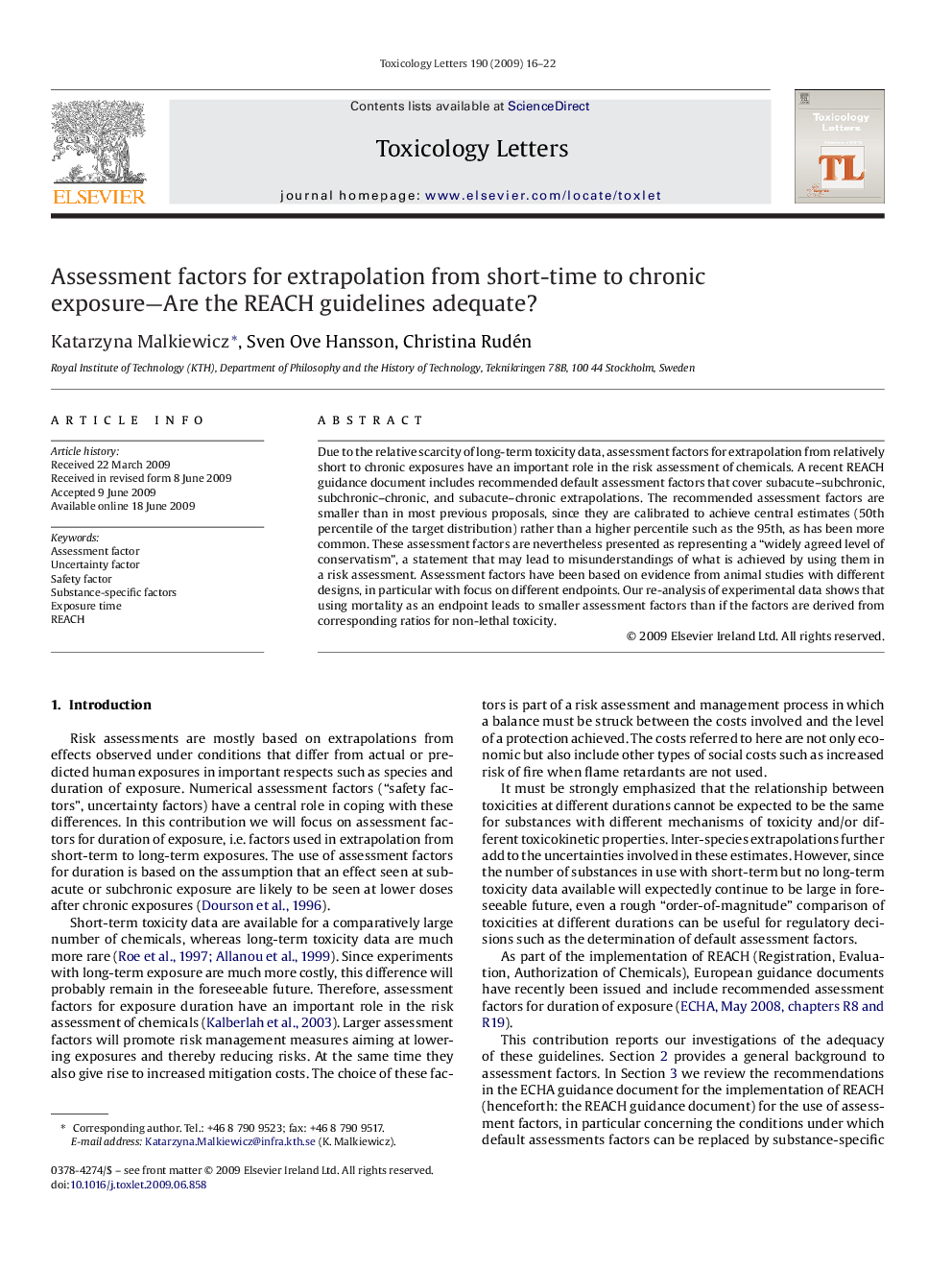| Article ID | Journal | Published Year | Pages | File Type |
|---|---|---|---|---|
| 2601034 | Toxicology Letters | 2009 | 7 Pages |
Due to the relative scarcity of long-term toxicity data, assessment factors for extrapolation from relatively short to chronic exposures have an important role in the risk assessment of chemicals. A recent REACH guidance document includes recommended default assessment factors that cover subacute–subchronic, subchronic–chronic, and subacute–chronic extrapolations. The recommended assessment factors are smaller than in most previous proposals, since they are calibrated to achieve central estimates (50th percentile of the target distribution) rather than a higher percentile such as the 95th, as has been more common. These assessment factors are nevertheless presented as representing a “widely agreed level of conservatism”, a statement that may lead to misunderstandings of what is achieved by using them in a risk assessment. Assessment factors have been based on evidence from animal studies with different designs, in particular with focus on different endpoints. Our re-analysis of experimental data shows that using mortality as an endpoint leads to smaller assessment factors than if the factors are derived from corresponding ratios for non-lethal toxicity.
